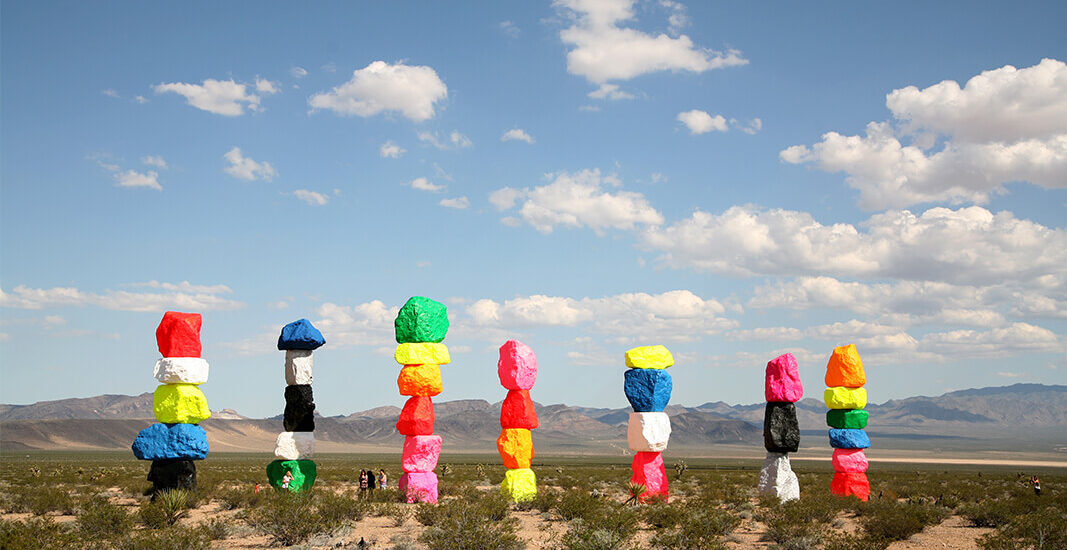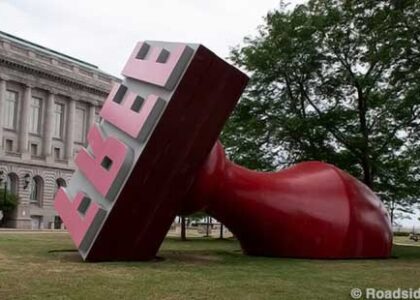As you journey through the arid landscape of the Nevada desert, a splash of vibrant color unexpectedly rises from the earth. This is Seven Magic Mountains, an art installation that has captured the imagination of both locals and travelers from far and wide. These towering, colorful stacks of rocks are the brainchild of renowned Swiss artist Ugo Rondinone. They stand as a testament to human creativity and the harmonious coexistence of nature and art.
The story of Seven Magic Mountains begins in the early 2010s when Ugo Rondinone envisioned a work that would bring together the natural and artificial. The installation, completed in May 2016, was commissioned by the Nevada Museum of Art and the Art Production Fund. Consisting of seven towers of stacked boulders, each painted in bright, fluorescent colors, these sculptures reach over thirty feet into the sky. Rondinone’s creation is a modern-day Stonehenge, a beacon of contemporary art in the vast desert.
The journey of these stones is remarkable in itself. Sourced from the nearby Nevada quarry, each boulder was carefully selected and transported to this site, where Rondinone meticulously arranged them to create a balance between chaos and order. The colors are not just for show; they represent a dialogue between the natural environment and the artificial world, a theme central to Rondinone’s artistic philosophy.
Seven Magic Mountains quickly became a cultural phenomenon. Initially intended as a temporary installation, its popularity has led to extensions of its exhibition. The site has attracted millions of visitors, all eager to witness this striking juxtaposition of color against the stark backdrop of the desert. It’s not just an art piece; it’s an experience that invites reflection on the human impact on natural landscapes.
The location of Seven Magic Mountains is also significant. Situated just ten miles south of Las Vegas, it offers a moment of respite and contemplation away from the bustling city life. It serves as a reminder of the delicate balance between our urban environments and the natural world.
In the broader context of art history, Seven Magic Mountains stands as a symbol of land art, a movement that emerged in the 1960s and 70s. This genre of art is characterized by its use of natural landscapes to create site-specific installations. Artists like Robert Smithson and Nancy Holt paved the way for Rondinone’s work, challenging traditional notions of art and encouraging viewers to engage with the environment in new ways.
As you stand before these vibrant towers, consider the stories they tell. They speak of artistic vision, of cultural dialogue, and of the ever-evolving relationship between humanity and nature. Seven Magic Mountains is more than just a visual spectacle; it is a conversation starter, a catalyst for thought, and a testament to the enduring power of art to transform our perception of the world.
Today, Seven Magic Mountains continues to draw visitors from all over the globe, each leaving with their own interpretations and inspirations. It stands as a legacy of Ugo Rondinone’s vision, a colorful landmark that celebrates the confluence of the natural and the man-made.



